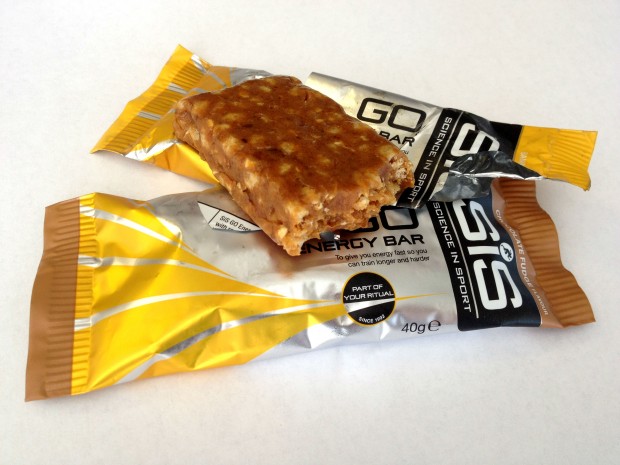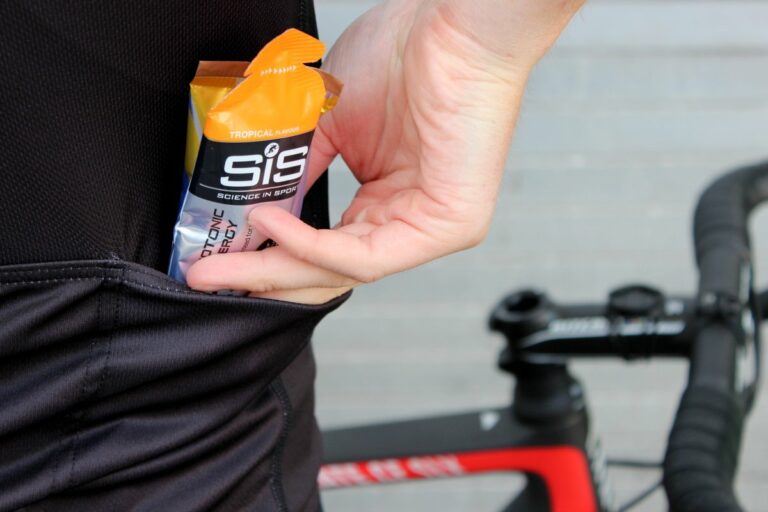The Science in Sport GO energy bar is a good snack to fuel a ride, though the moist, chewy texture can make it difficult to digest when working hard on the bike.
The energy bar is a long-standing part of Science in Sport’s GO range and comes in two sizes: a 65g version and this ‘mini’ 45g option, introduced after customer feedback suggested the original version was a little big to eat in one hit.

The 45g bar contains 25g of carbohydrate, which is nearly half of the 60g recommended per hour of exercise by Science in Sport. It’s easy to hit that total if you eat a bar, wash it down with a few swigs of an energy drink and, if you’re on a particularly long or hard ride, supplement it with a gel. Each bar is low in fat (2g) and has a moderate amount of protein in it (4.5g).
The bar comes in four flavours – banana fudge, chocolate, blueberry, and red berry – and the two I tried – banana fudge and chocolate – were reasonably tasty, although taste is highly subjective and we’d recommend trying a variety of products to see what works for you. The bars are fruit-based, with grape juice the predominant flavour, with a hint of banana fudge or chocolate mixed in, though it’s fair to say the banana didn’t taste as natural as the real thing. It’s quite a sweet flavour – again, see what works for you.
The bar has a moist, chewy texture which remains firm when its warm – the bars were part of my ‘menu’ at the Etape du Tour, where temperatures rose to over 30 degrees. That moist, chewy texture is perfect before or after a ride, or if bimbling along on a ride, but is difficult to get down when breathing hard. I’ve found that to be the case with most energy bars, however, and prefer to take small bites – little and often – when riding steady and to use gels when in need of a quick and easy energy hit.
All in all, the Science in Sport GO energy bar is a tasty snack, but it works best as fuel before a ride, once you’re back home and in need of a carbohydrate/protein fix, or at a cafe stop/feed station.
Price: £1 for one, £30 for 27
Website: Science in Sport

